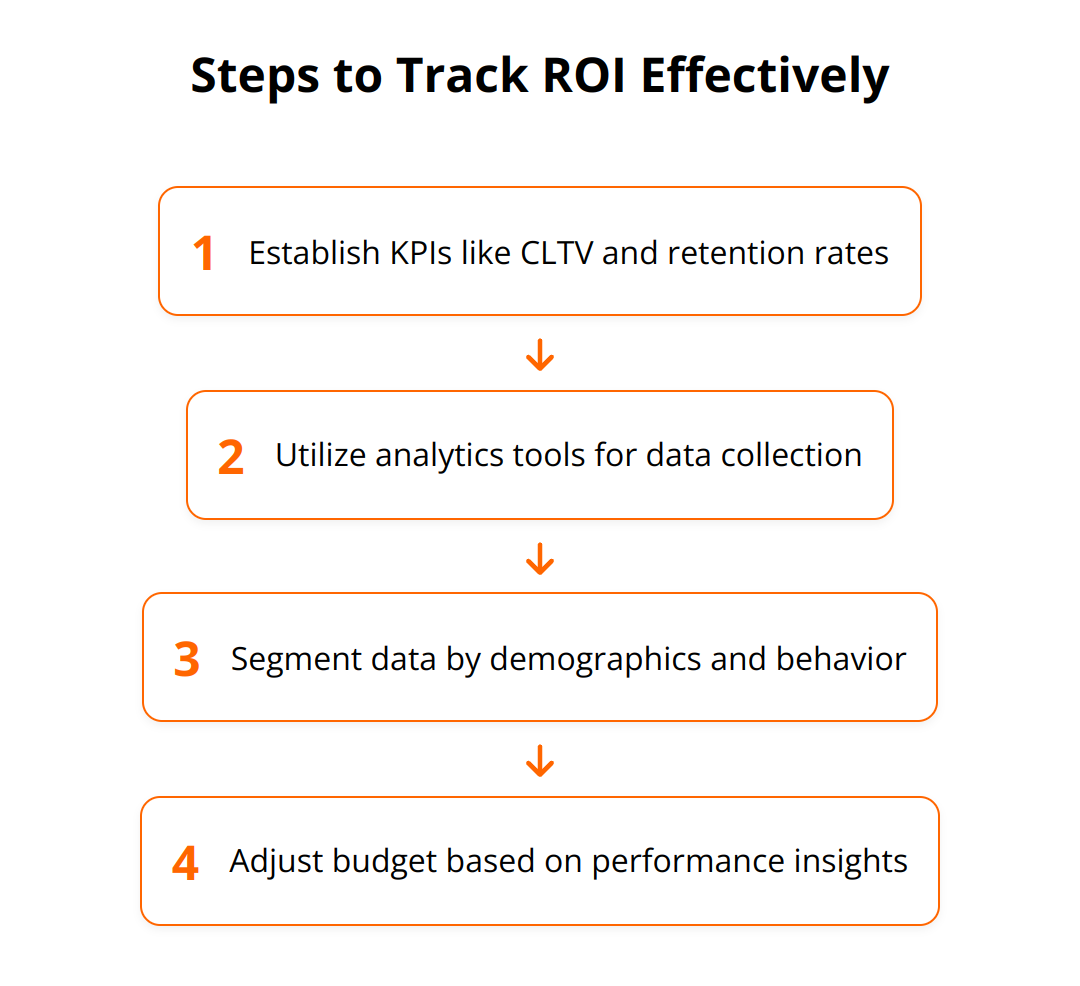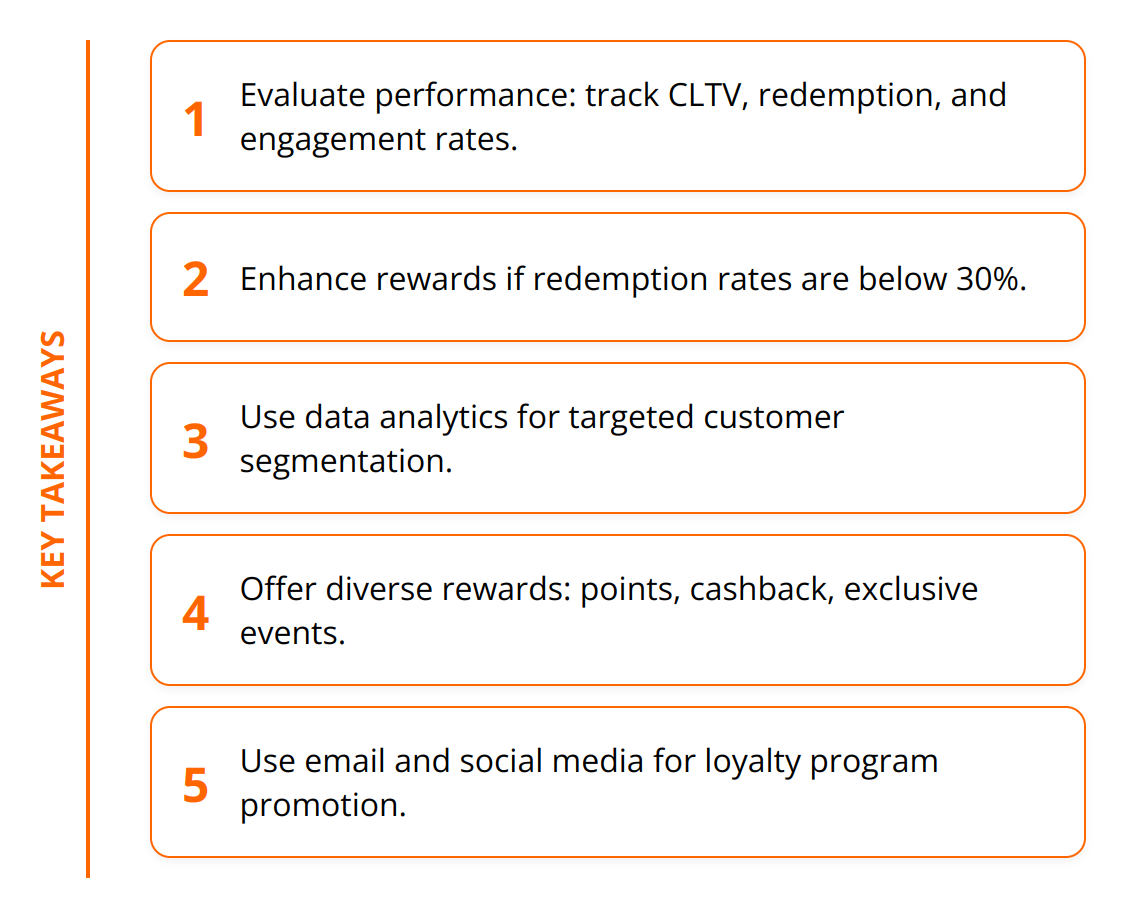
Allocating your loyalty budget effectively can significantly impact your program’s success.
We at Reward the World have compiled best practices to help you maximize the value of your investment.
Let’s dive into key strategies and actionable insights for optimal budget distribution.
How to Assess Your Loyalty Program
Assessing your current loyalty program is vital for effective budget allocation.

One key step is evaluating program performance metrics. This involves looking at metrics like Customer Lifetime Value (CLTV), redemption rates, and engagement rates. For instance, the average loyalty program sees a 30% redemption rate, but top performers exceed 40%. If your redemption rates fall below this, your rewards might not be appealing enough.
Identifying strengths and weaknesses within your program can help you pinpoint where your budget should go. If you see high engagement but low redemption, consider enhancing your reward offerings. Conversely, if sign-ups are stagnant, your onboarding process might need streamlining. A study by HubSpot found that companies optimizing their onboarding process saw a 34% increase in customer satisfaction.

Analyzing customer feedback and engagement data provides a wealth of insights. Scrutinize survey results, social media interactions, and direct feedback. Companies like Raize, which improved their CLTV by 40%, report that customer feedback was pivotal in refining their program.
Here are some actionable steps:
- Track CLTV: Helps identify the value customers bring over their entire relationship with your brand.
- Monitor redemption rates: Provides insights on how effective and appealing your rewards are.
- Engagement data: Helps understand customer interaction with different program aspects.
- Customer surveys: Directly measures satisfaction and areas for improvement.
- Social media metrics: Offers real-time feedback on customer perceptions.
For more in-depth strategies, explore our customer retention tactics.
By regularly assessing these aspects, you can continually refine your loyalty program to better serve your customers and make the most of your budget.
How to Allocate Your Loyalty Budget
Prioritizing key areas for budget allocation is essential for a successful loyalty program.

Customer segmentation and targeting are foundational. Tailoring rewards and communications to specific customer segments can yield impressive results. According to Accenture, personalized marketing can boost sales by up to 20%. Splitting your audience into meaningful segments allows targeted strategies that resonate better than one-size-fits-all approaches. Utilize data analytics tools to understand customer behaviors and preferences. Brands using these methods report higher engagement and improved ROI.
Reward types and incentives should be carefully chosen. Offering a variety of rewards can increase appeal and engagement. For example, point-based systems, cashback options, and exclusive events provide diverse benefits. Starbucks’ loyalty program, which includes free drinks and member-exclusive events, has seen a 7% increase in customer visits. Another key consideration is the perceived value of rewards. Consumers are more likely to participate in programs offering high-value or exclusive rewards.
Marketing and promotional strategies are critical for awareness and participation. Allocate a portion of your budget to promote your loyalty program through email campaigns, social media, and in-store promotions. Email is the leading channel for loyalty promotion, with a study by DMA showing that email marketing generates a 4200% ROI. Leveraging social media platforms can also amplify reach and engagement. Discount offers and special promotions should be well-timed and relevant to maximize impact.
When prioritizing your budget, here are practical tips:
- Analyze customer segmentation: Invest in data analytics to tailor rewards.
- Diverse reward types: Offer points, cashback, and events to increase appeal.
- Promotional strategies: Use email and social media for maximum reach.

By focusing on segmentation, reward variety, and strategic marketing, you can optimize your loyalty budget and achieve higher engagement and customer satisfaction.
For additional best practices, see scaling your reward program.
Understanding these areas will help you allocate your budget effectively, leading to a more successful loyalty program.
How to Track and Measure ROI
It’s essential to keep a close eye on the return on investment (ROI) of your loyalty program to make informed decisions about future budgets and strategies. The foundation of effective ROI tracking lies in establishing clear key performance indicators (KPIs) and benchmarks. Metrics such as CLTV, retention rates, and program participation rates provide concrete data on program efficacy. For example, a retention rate above 70% indicates a strong program, while anything below 50% may need reevaluation.
Utilizing analytics tools is critical for precise performance tracking. Employing platforms like Google Analytics, Mixpanel, or loyalty-specific software provides real-time data and actionable insights. These tools help segment data by age, location, and purchasing behavior, allowing brands to refine strategies. Companies leveraging data analytics see an average of 15-20% increase in program efficiency.

Adjusting your budget based on ROI insights ensures continued success. If data shows high returns on certain reward types but low on others, reallocating funds to high-performing rewards is prudent. For instance, Adidas increased their reward program efficiency by 25% after focusing on high-engagement rewards. Regularly reviewing and optimizing your budget allocation keeps the program aligned with customer preferences and market trends.
Practical tips for ROI tracking:
- Set clear KPIs: Use metrics like CLTV and redemption rates.
- Leverage analytics tools: Real-time data aids in quick adjustments.
- Regular review and adjust: Reallocate budget based on performance data.
For more targeted advice, read about essential UX statistics.
Accurate ROI tracking and adjustment can lead to a more successful and efficient loyalty program, ultimately enhancing customer satisfaction and business growth.
Conclusion
Allocating your loyalty budget effectively involves thorough assessment, targeted spending, and precise ROI tracking. Focusing on key performance metrics, like CLTV and engagement rates, ensures that your budget aligns with your strategic goals.

Continuously evaluating your program’s performance helps adapt to changing customer behaviors and market trends. Regular adjustments based on data insights lead to sustained program success and customer satisfaction. Encouraging customer-centric strategies enhances loyalty and program engagement, driving better business outcomes.
For practical insights and tools to enhance your loyalty initiatives, visit Reward the World. Our platform provides a comprehensive solution to boost customer loyalty and elevate company performance with minimal costs.
Explore more about omnichannel loyalty solutions for a deeper understanding of effective strategies.
